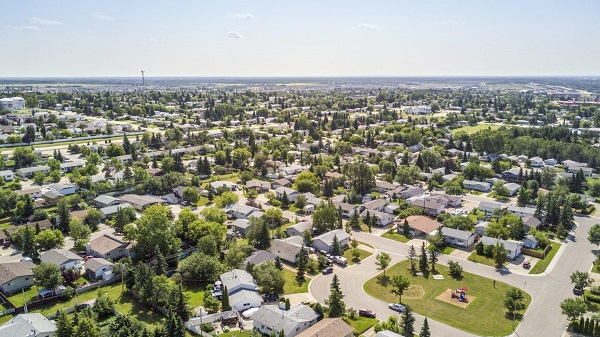Alberta
ASIRT releases findings on shooting death of armed murder suspect
From Alberta Serious Incident Response Team: RCMP acted reasonably in shooting fatality during arrest
On Jan. 7, 2017, ASIRT was directed to investigate the circumstances surrounding the death of a 27-year-old man during an attempted arrest by the RCMP that same day.
During a planned entry into a Stoney Nakoda First Nation residence to locate the man and two others suspected of involvement in a recent homicide, a confrontation occurred that resulted in the man being shot by an RCMP Emergency Response Team (ERT) officer.
ASIRT interviewed police and civilian witnesses, including the individuals present in the home that day and the involved officers. As well, the crime scene was examined, and photographs, radio communications and all available video were seized. ASIRT’s investigation is complete.
Having reviewed the investigation, executive director Susan Hughson, QC, concluded there were no reasonable grounds, nor reasonable suspicion, to believe a police officer committed a criminal offence.
On Jan. 7, 2017, RCMP executed several arrest warrants at residences on the Stoney Nakoda First Nation in search of three men, wanted for a murder that had occurred six days earlier. At the time, RCMP had information that the 27-year-old man had also been in possession of a firearm, which violated a court-ordered prohibition in effect until 2025. As such, the execution of the warrants was deemed to be high risk.
At approximately 4 p.m., ERT simultaneously sent teams to execute the warrants at two neighbouring homes, one being the home of the family of the 27-year-old man and his brother, also wanted in relation to the same homicide. The father of the men met the officers at the doorway to the residence. Officers located the brother inside on the first floor and arrested him without incident. As the officers proceeded further into the home, several other people were located and contained on the main level while others emerged from the basement. When asked whether anyone was still in the basement, the officers were told no.
A number of officers went down to clear the basement, announcing that they were police and that they had a warrant. As they moved along an interior wall towards a doorway in the basement, a man, later confirmed to have been the 27-year-old man, yelled at the officers to get out and leave him alone. A single shot was then fired from the opposite side of the wall, penetrating through drywall and narrowly missing the officers. The officers called out “shots fired”, returned to the main floor and, after throwing a tear gas canister into the basement, evacuated the residence.
At this point, officers were aware that they were dealing with an armed man and took up positions to contain the residence after everyone had been moved to safety. At this point, the RCMP would have had the benefit of time and resources.
One officer went towards the treeline on the west side of the residence to establish a rear sniper point. He positioned himself behind an old washing machine approximately 12 metres away from the house. While doing so, a gunshot was heard, believed to have come from the southwest corner of the basement near the basement window closest to the officer, and the officer reported hearing the sound of breaking glass.
Almost immediately, a woman climbed out of the window. As the officer yelled commands for her to walk towards him, the 27-year-old man emerged from the same basement window with a shotgun in his hands, carried at waist level and pointing in the direction of the officer and the young woman. The officer fired a single shot from his rifle, striking the 27-year-old man in the torso, causing him to collapse to the ground. Other ERT members moved in to secure the man and the shotgun, and to render emergency aid.
With the tear gas coming out of the basement window, RCMP moved the man and placed him on a jacket on the snow-covered ground to prevent hypothermia. The RCMP loaded the man into an RCMP vehicle and transported him to an ambulance waiting a short distance away, as the house and scene had not yet been cleared and confirmed safe by ERT officers. These officers re-entered the residence and found it empty.
The man was transported to a Calgary hospital where he was declared deceased. He sustained a single gunshot wound to the abdomen that injured internal organs and his spinal cord. More significantly, it cut through the main abdominal artery. This resulted in substantial hemorrhage and death. Toxicology was positive for methamphetamine.
The man’s gun, a 12-gauge tactical shotgun, was recovered loaded with three unfired shells. The pump action was in the forward firing position.
Section 25 of the Criminal Code states that a police officer is authorized to use as much force as is reasonably necessary in the execution of his or her duties. When necessary, an officer is entitled to resort to lethal force where there are, subjectively and objectively, grounds to believe that the person presents a risk of imminent bodily harm or death to the officer or another person. Lastly, an officer may use lethal force to prevent flight in limited circumstances.
The evidence is unequivocal that the 27-year-old man called out and fired upon the officers as they descended the stairs to clear the basement. The only other person in the basement was the unarmed woman who had exited the residence just ahead of the man. The woman confirmed that, although she did not see the events leading up to the officer-involved shooting, she immediately turned after the gunshot and saw officers approach the man and kick the shotgun away from the man as he laid on the ground.
Both objectively and subjectively, the man presented a risk of imminent grievous bodily harm or death to the officer, and potentially to the woman who would have been in the line of fire. The officer was lawfully placed and acting in the lawful execution of his duty. In the circumstances, the force used was both reasonable and authorized under the Criminal Code. There being no grounds to believe that an offence was committed by a police officer, no charges will be laid.
ASIRT’s mandate is to effectively, independently and objectively investigate incidents involving Alberta’s police that have resulted in serious injury or death to any person.
Alberta
REPORT: Alberta municipalities hit with $37 million carbon tax tab in 2023

Grande Prairie. Getty Images photo
From the Canadian Energy Centre
Federal cash grab driving costs for local governments, driving up property taxes
New data shows the painful economic impact of the federal carbon tax on municipalities.
Municipalities in Alberta paid out more than $37 million in federal carbon taxes in 2023, based on a recent survey commissioned by Alberta Municipal Affairs, with data provided to the Canadian Energy Centre.
About $760,000 of that came from the City of Grande Prairie. In a statement, Mayor Jackie Clayton said “if the carbon tax were removed, City property taxes could be reduced by 0.6 per cent, providing direct financial relief to residents and businesses in Grande Prairie.”
Conducted in October, the survey asked municipal districts, towns and cities in Alberta to disclose the amount of carbon tax paid out for the heating and electrifying of municipal assets and fuel for fleet vehicles.
With these funds, Alberta municipalities could have hired 7,789 high school students at $15 per hour last year with the amount paid to Ottawa.
The cost on municipalities includes:
Lloydminster: $422,248
Calgary: $1,230,300 (estimate)
Medicine Hat: $876,237
Lethbridge: $1,398,000 (estimate)
Grande Prairie: $757,562
Crowsnest Pass: $71,100
Red Deer: $1,495,945
Bonnyville: $19,484
Hinton: $66,829
Several municipalities also noted substantial indirect costs from the carbon tax, including higher rates from vendors that serve the municipality – like gravel truck drivers and road repair providers – passing increased fuel prices onto local governments.
The rising price for materials and goods like traffic lights, steel, lumber and cement, due to higher transportation costs are also hitting the bottom line for local governments.
The City of Grande Prairie paid out $89 million in goods and services in 2023, and the indirect costs of the carbon tax “have had an inflationary impact on those expenses” in addition to the direct costs of the tax.
In her press conference announcing Alberta’s challenge to the federal carbon tax on Oct. 29, 2024, Premier Danielle Smith addressed the pressures the carbon tax places on municipal bottom lines.
“In 2023 alone, the City of Calgary could have hired an additional 112 police officers or firefighters for the amount they sent to Ottawa for the carbon tax,” she said.
In a statement issued on Oct. 7, 2024, Ontario Conservative MP Ryan Williams, shadow minister for international trade, said this issue is nationwide.
“In Belleville, Ontario, the impact of the carbon tax is particularly notable. The city faces an extra $410,000 annually in costs – a burden that directly translates to an increase of 0.37 per cent on residents’ property tax bills.”
There is no rebate yet provided on retail carbon pricing for towns, cities and counties.
In October, the council in Belleville passed a motion asking the federal government to return in full all carbon taxes paid by municipalities in Canada.
The unaltered reproduction of this content is free of charge with attribution to the Canadian Energy Centre.
Alberta
MAiD In Alberta: Province surveying Albertans about assisted suicide policies

Alberta’s government is launching a public engagement to gather input about legislation and policies around assisted suicide, also referred to as medical assistance in dying (MAID).
Medical assistance in dying is a process that allows an eligible person to receive assistance from a medical practitioner in ending their life. To be found eligible, a person must be suffering from a serious and permanent medical condition.
Alberta’s government is reviewing how MAID is regulated to ensure there is a consistent process as well as oversight that protects vulnerable Albertans, specifically those living with disabilities or suffering from mental health challenges. An online survey is now open for Albertans to share their views and experiences with MAID until Dec. 20.
“We recognize that medical assistance in dying is a very complex and often personal issue and is an important, sensitive and emotional matter for patients and their families. It is important to ensure this process has the necessary supports to protect the most vulnerable. I encourage Albertans who have experience with and opinions on MAID to take this survey.”
In addition to the online survey, Alberta’s government will also be engaging directly with academics, medical associations, public bodies, religious organizations, regulatory bodies, advocacy groups and others that have an interest in and/or working relationship to the MAID process, health care, disabilities and mental health care.
Feedback gathered through this process will help inform the Alberta government’s planning and policy decision making, including potential legislative changes regarding MAID in Alberta.
“Our government has been clear that we do not support the provision of medically assisted suicide for vulnerable Albertans facing mental illness as their primary purpose for seeking their own death. Instead, our goal is to build a continuum of care where vulnerable Albertans can live in long-term health and fulfilment. We look forward to the feedback of Albertans as we proceed with this important issue.”
“As MAID is a federally legislated and regulated program that touches the lives of many Albertans, our priority is to ensure we have robust safeguards to protect vulnerable individuals. Albertans’ insights will be essential in developing thoughtful policies on this complex issue.”
The federal Criminal Code sets out the MAID eligibility criteria, procedural safeguards and reporting obligations. The federal government has paused MAID eligibility for individuals with a mental illness as their sole underlying medical condition until March 2027 to ensure the provincial health care systems have processes and supports in place. Alberta’s government does not support expanding MAID eligibility to include those facing depression or mental illness and continues to call on the federal government to end this policy altogether.
Related information
-

 Brownstone Institute17 hours ago
Brownstone Institute17 hours agoThe Most Devastating Report So Far
-

 Economy1 day ago
Economy1 day agoCOP 29 leaders demand over a $1 trillion a year in climate reparations from ‘wealthy’ nations. They don’t deserve a nickel.
-

 Censorship Industrial Complex21 hours ago
Censorship Industrial Complex21 hours agoAnother Mass Grave?
-

 ESG4 hours ago
ESG4 hours agoCan’t afford Rent? Groceries for your kids? Trudeau says suck it up and pay the tax!
-

 Alberta20 hours ago
Alberta20 hours agoMAiD In Alberta: Province surveying Albertans about assisted suicide policies
-

 Energy1 day ago
Energy1 day agoOttawa’s proposed emission cap lacks any solid scientific or economic rationale
-

 Alberta1 day ago
Alberta1 day agoOn gender, Alberta is following the science
-

 International5 hours ago
International5 hours agoElon Musk praises families on X: ‘We should teach fear of childlessness,’ not pregnancy



